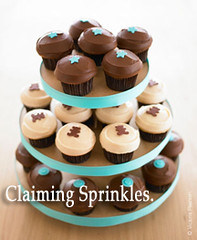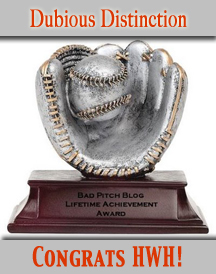With advertising continuing its trend toward straightforward communication, it’s no surprise magazines are looking to promote their product — advertising — with a simple straightforward message: “They make people want to buy things."
The Gawker, emphasizing that magazine ad pages are down more than seven percent, presents some tongue-in-cheek logic behind a campaign that appears mostly on the Internet. The Gawker also pulls our favorite sentence from the article that offers an explanation:
” The goal is to show that advertising in magazines encourages consumers to consider buying products — a phenomenon known as purchase intent — and stimulates them to go online to shop or to learn more about items they might want to buy.”
Wow! The logic is nothing new. Magazine publishers have been pushing this message — that print advertisements drive online searches, Web site visits, and word of mouth (among other things) — for some time but public relations and direct marketing wasn’t preventing the decline. Why not? Target audience.
The vast majority of print ad purchasers are at agencies. Yet, media buyers are much more likely to consume content online. But that has little to do with the real challenge that magazine publishers are facing today.
Most magazine publishers have spent so many years promoting cost per impression; it will require significant effort to reverse the most pervasive magazine marketing sales message in history. In fact, they have to retool their message to be more like the small publications they used to browbeat based on numbers provided by the Audit Bureau of Circulations because Internet content beats them in free content, niche consumers, and numbers. Is there anything left?
Yes, and no.
It seems to me that the only thing that magazine publishers can hope to do is refine their niche, improve quality content, and provide some or all of their content online while still retaining some semblance of differential between the print publication and online content. Impossible? Not really.
Entertainment Weekly seems to be doing a reasonable job at differentiating its online and print content. But Time seems slightly more challenged. Dwell, which is one young print publication I do enjoy receiving in the mail, not so well.
But more importantly, they might do a better job bundling print and online space. After all, if magazines have something right, it’s this: most advertisements are starting to have a singular mission — drive the consumer to the Web site where every inch of content is controlled by the company.
That’s something to think about. And so is the logic behind a marketing campaign that makes consumer look unhappy with their magazine-influenced purchases.

The Gawker, emphasizing that magazine ad pages are down more than seven percent, presents some tongue-in-cheek logic behind a campaign that appears mostly on the Internet. The Gawker also pulls our favorite sentence from the article that offers an explanation:
” The goal is to show that advertising in magazines encourages consumers to consider buying products — a phenomenon known as purchase intent — and stimulates them to go online to shop or to learn more about items they might want to buy.”
Wow! The logic is nothing new. Magazine publishers have been pushing this message — that print advertisements drive online searches, Web site visits, and word of mouth (among other things) — for some time but public relations and direct marketing wasn’t preventing the decline. Why not? Target audience.
The vast majority of print ad purchasers are at agencies. Yet, media buyers are much more likely to consume content online. But that has little to do with the real challenge that magazine publishers are facing today.
Most magazine publishers have spent so many years promoting cost per impression; it will require significant effort to reverse the most pervasive magazine marketing sales message in history. In fact, they have to retool their message to be more like the small publications they used to browbeat based on numbers provided by the Audit Bureau of Circulations because Internet content beats them in free content, niche consumers, and numbers. Is there anything left?
Yes, and no.
It seems to me that the only thing that magazine publishers can hope to do is refine their niche, improve quality content, and provide some or all of their content online while still retaining some semblance of differential between the print publication and online content. Impossible? Not really.
Entertainment Weekly seems to be doing a reasonable job at differentiating its online and print content. But Time seems slightly more challenged. Dwell, which is one young print publication I do enjoy receiving in the mail, not so well.
But more importantly, they might do a better job bundling print and online space. After all, if magazines have something right, it’s this: most advertisements are starting to have a singular mission — drive the consumer to the Web site where every inch of content is controlled by the company.
That’s something to think about. And so is the logic behind a marketing campaign that makes consumer look unhappy with their magazine-influenced purchases.




















